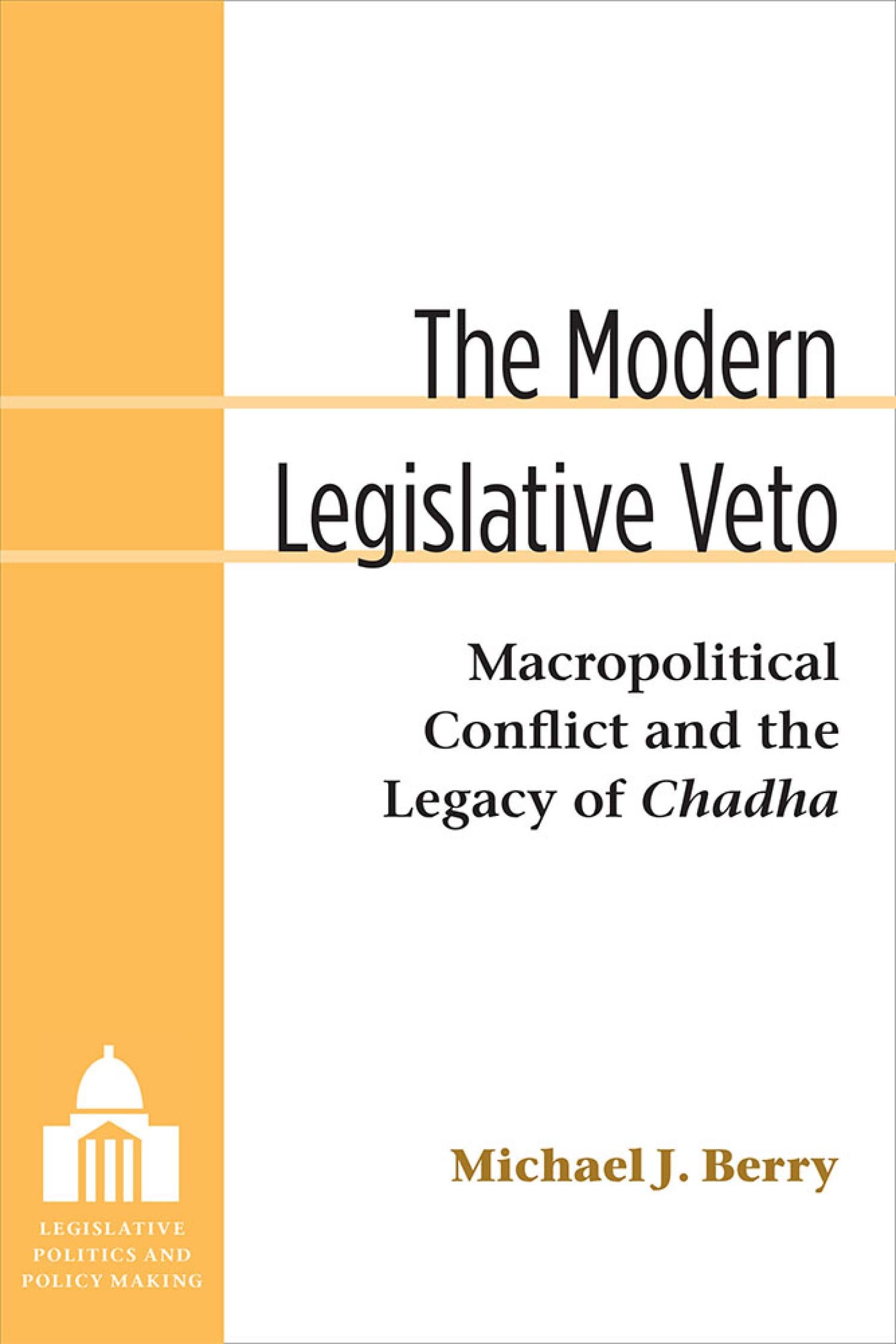
The Modern Legislative Veto

By Michael J. Berry (PolSci'05; PhD'08)
(University of Michigan Press, 342 pages; 2016)
In The Modern Legislative Veto, Michael J. Berry uses a multimethod research design, incorporating quantitative and qualitative analyses, to examine the ways that Congress has used the legislative veto over the past 80 years. This parliamentary maneuver, which delegates power to the executive but grants the legislature a measure of control over the implementation of the law, raises troubling questions about the fundamental principle of separation of governmental powers.
Berry argues that, since the U.S. Supreme Court declared the legislative veto unconstitutional inImmigration and Naturalization Service (INS) v. Chadha (1983), Congress has strategically modified its use of the veto to give more power to Appropriations Committees. Using an original dataset of legislative veto enactments, Berry finds that Congress has actually increased its use this oversight mechanism since Chadha, especially over defense and foreign policy issues. Democratic and Republican presidents alike have fought back by vetoing legislation containing legislative vetoes and by using signing statements with greater frequency to challenge the legislative veto’s constitutionality. A complementary analysis of state-level use of the legislative veto finds variation in oversight powers granted to state legislatures, but similar struggles between the legislature and the executive.
This ongoing battle over the legislative veto points to broader efforts by legislative and executive actors to control policy, efforts which continually negotiate how the democratic republic established by the Constitution actually operates in practice.

